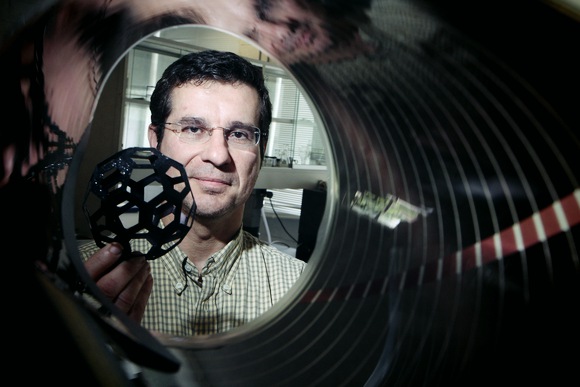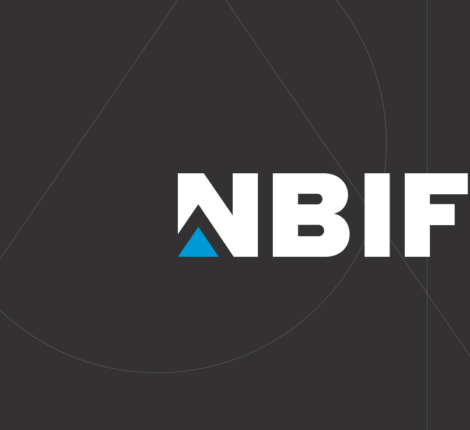- June 7, 2013
- Applied Research
- Comments : 0
Looking For Solar Power Advances – Telegraph Journal

By Rhiannon Russell – Telegraph Journal | link to original article | Photo: James West/Daily Gleaner
Imagine a world in which curtains, roof shingles and vinyl siding could convert sunlight into electricity at an affordable cost.
That’s the world Felipe Chibante is trying to create.
Chibante, the Richard J. Currie chair in nanotechnology in the department of chemical engineering at the University of New Brunswick in Fredericton, has received $460,000 from the New Brunswick Innovation Foundation to discover a way to reduce the cost of making fullerene – a carbon molecule – which can be combined with conductive polymers to create plastic solar cell technology.
“What’s cool about this is you’re just basically making an ink and spreading that ink over a piece of plastic,” Chibante said. “You put on some other inks that help conduct electricity and you can make things that are thinner than your credit card. You can roll it up, just like you would a thick Saran Wrap.”
The layers in the ink absorb light, exciting the molecules so that they release an electron into the circuit, creating a charge.
Plastic solar cell technology – the alternative to silicon solar cell technology, such as solar panels – has been in development for years, ever since Nobel Prize-winning chemist Richard E. Smalley discovered fullerene in 1985. Chibante was a student on his team.
The problem is that fullerene is expensive – at $15,000 per kilogram, it’s only slightly cheaper than gold. In comparison, silicon costs about $55 per kilogram.
“The big difference is you only have to use one-hundredth the amount of material with a fullerene solar cell compared to silicon,” Chibante said. “So there’s a big advantage in that you’re using very thin films and you have the flexibility and the cheap manufacturing. Even in the near term, the cost to get a watt of solar energy can actually be cheaper with these plastic technologies.”
So the goal of his three-year research program is to find a way to lower the price of fullerene, which at a human level looks like brown salt. Though other companies are doing the same, they’re aiming for a 20 to 30 per cent price drop. Chibante plans for a 50 per cent decrease initially, and by the end of the project, he hopes to bring fullerene down to $1,000 per kilogram, maximum.
“We talked to these companies (who manufacture plastic solar cell technology) and said, ‘What if we can lower the price of the fullerene by half?’ and instantly we were getting support, and people saying, ‘If you can do that, that fundamentally changes our business model.’”
NBIF chair Robert Hatheway said the province’s economic development comes from two general sources – natural resources and innovation.
“This is an interesting combination of the two,” he said. “The sun is obviously a natural resource that everybody has access to. If we can tap into that market and create a product that people will want to buy, it’s a marriage of innovation, which creates economic development and wealth, and natural resources, which New Brunswick is so accustomed to. It’s really, to me, a great opportunity and potentially a big win for the province from an economic standpoint.”

